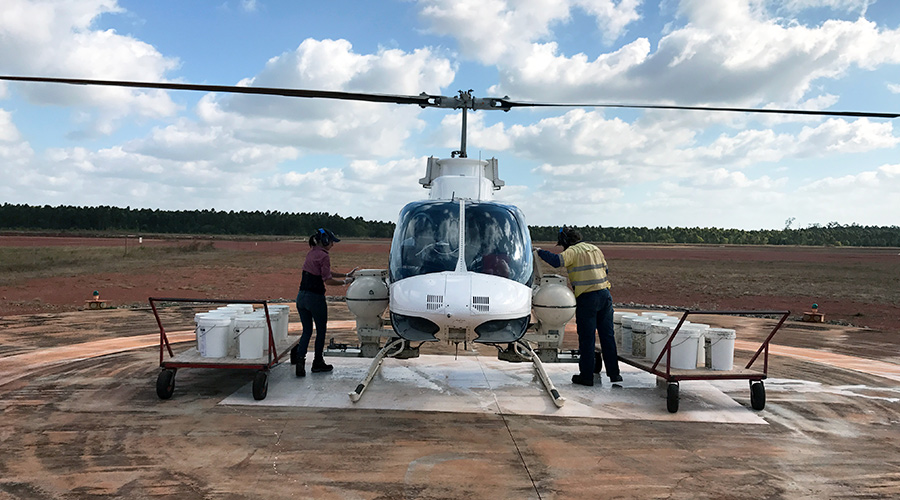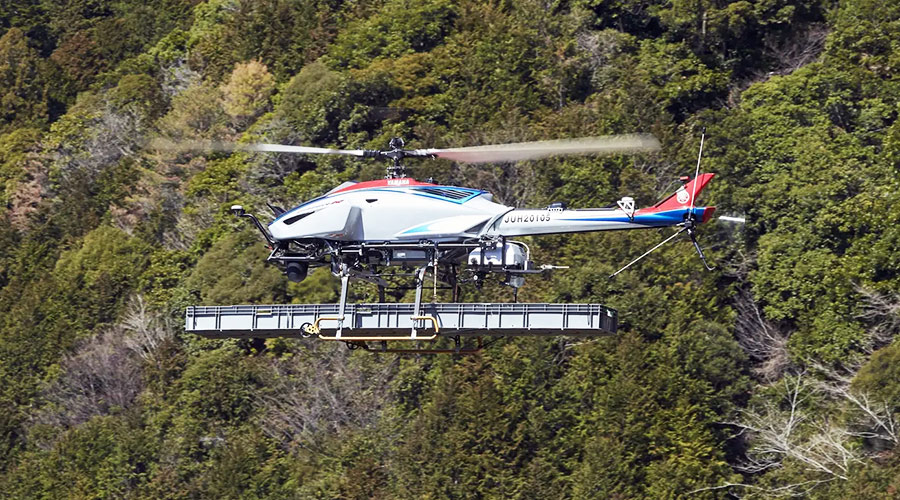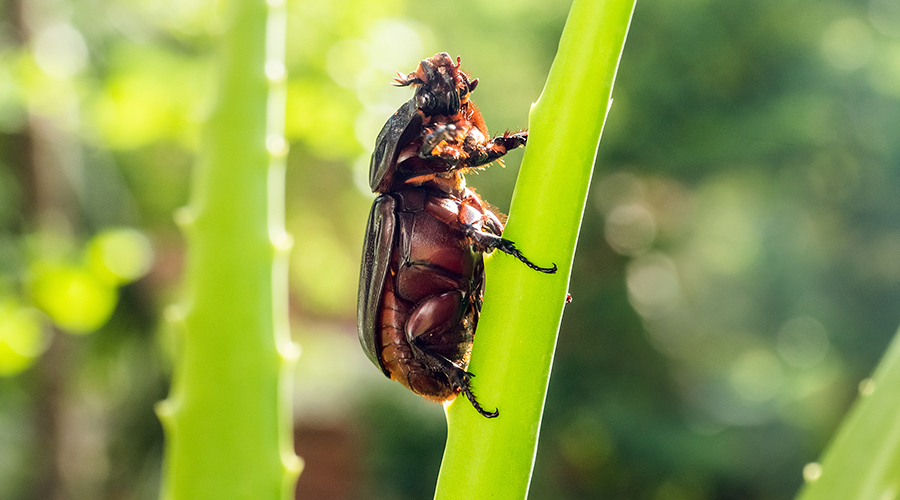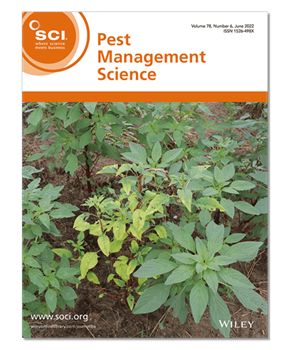20 years of aerial treatment data came in handy for this study into the most efficient flight strategies, as Lucy Wright reports.
Invasive species pose significant threats to biodiversity, agriculture, and economies around the world, particularly in developing countries. Aerial treatments via drone or helicopter have become a go-to tool for invasive species management programmes, but there is a critical knowledge gap in understanding the interplay of factors affecting flight time and operational costs.
Now, Ben Hoffmann, CSIRO Health and Biosecurity, Tropical Ecosystems Research Centre, Australia, and lead author on this study, has taken the first step towards quantifying the relationships between bait types, delivery systems, and treatment time.
Ben Hoffmann
Health and Biosecurity, Tropical Ecosystems Research Centre
CSIRO, Australia
Hoffmann and the team have presented a comprehensive analysis of a large aerial treatment dataset, painstakingly compiled from 20 years of records from two Australian ant eradication programmes. They hope this will set a precedent for increased capture and reporting of data by aerial baiting practitioners, to accelerate improvements in efficiency and reduce the cost of aerial baiting.
20 years in the making
Speaking to SCI, Hoffmann said ‘This wasn’t a planned research topic. I had simply been conducting aerial ant baiting for almost 20 years in numerous projects and had kept detailed data of the treatments in case they would be useful in the future. Sure enough, they were!'
‘The data provided all sorts of insights into the different times it took the different baits to be dispersed by the different apparatus. This data can now be used globally to accurately plan and cost treatments for invasive species management.’
The data revealed notable findings regarding the effectiveness of two different bait delivery systems – motorised hoppers (detachable buckets which hang underneath the helicopter) and side-mounted Isolairs (containers bolted to the sides of the helicopter).

Jet Ranger helicopter with a side-mounted Isolair. Credit: Ben Hoffmann, CSIRO
Hoffmann explains, ‘The data showed that the Isolair was significantly more efficient timewise for bait delivery than using an underslung bucket, counter to what we anticipated.
‘From the pilot’s perspective, the Isolair was also much safer, because it is much harder to fly, and particularly to turn, with a heavy weight hanging underneath the helicopter, especially in mild wind.’
However, the study also noted that there was a slight increase in motorised hopper bait dispersal efficiency when two buckets were used instead of one.

Yamaha Fazer unmanned helicopter. Credit: Yamaha
The authors also compared flight times of a Yamaha drone vs a manned helicopter. Over large areas, the helicopter was unsurprisingly more effective – however, Hoffmann notes, ‘the drone conducts work where the helicopter can’t – such as over small complex areas with infrastructure.’
‘Moreover, it confirms what we have found out – that drones can operate effectively in areas where deploying a helicopter or an aircraft may not be economically viable or feasible. By leveraging this technology, we can optimise the deployment of crop protection products and protect natural ecosystems thereby promoting sustainable practices.’
When drones pay off
Enter Greg Quinn, Aerospread Technologies Limited, Napier, New Zealand, who has been piloting industrial unmanned aerial systems for almost ten years and collaborated on the study.
In partnership with Hoffmann and CSIRO, Quinn has embarked on ground-breaking initiatives involving cutting-edge drone technology for biosecurity operations.
Greg Quinn
Aerospread Technologies Limited
Napier, New Zealand
Over the past two years, Hoffmann and Quinn’s work has primarily taken place in uninhabited regions characterised by steep terrain and dense vegetation. Speaking to SCI, Quinn described the challenges they encountered.
‘Since the drone lacked obstacle detection and avoidance sensors, we had to fly the aircraft above the tallest obstacle within each zone. Consequently, flights often exceeded altitudes of 100 metres, even though the drone was designed to operate at a mere three metres above ground level. This steep learning curve necessitated the development of distinct Standard Operating Procedures.’
Quinn notes that increased collection of aerial treatment data is having a significant impact on his work. ‘It provides valuable insights into our operational efficiencies and inefficiencies. By leveraging this data, we can redefine our approach to planning and executing treatments, thereby maximising the effectiveness of our efforts and achieving optimal outcomes. The ability to analyse and utilise this data empowers us to make informed decisions and continuously improve our strategies for better results.’
Looking ahead to the end of 2023, Quinn hopes to explore single-pilot operation of swarms of drones. He notes that this ‘holds great potential for enhanced coverage, improved accuracy, heightened safety, and increased operational flexibility compared to single-drone operations’.
Global benefits
The insights from the study could help those working in the field of invasive pest management globally. Speaking to SCI, Dr Ivan Rwomushana, Senior Scientist, Invasive Species Management at CABI, based at its regional centre for Africa, said:
‘The findings of this research address a critical gap in understanding how aerial treatments can potentially balance accuracy and efficiency while considering factors such as time and cost.’
Dr Ivan Rwomushana
Senior Scientist, Invasive Species Management
CABI
Rwomushana, who has managed a project assessing the use of drones for desert locust control in East Africa, noted ‘This [research] builds upon the work CABI has done on optimising key parameters such as height, flight time, and swath width when using drones in the precise application of a biopesticide in areas infested with desert locusts.’
For Ben Hoffmann, there is plenty lined up in the publication pipeline. Topics for draft papers include RNAi (genetic) baits that will only affect the target species and the metagenomics of the coconut rhinoceros beetle. But perhaps his biggest challenge is publishing all the data that he has already collated.

Coconut rhinoceros beetle (Oryctes rhinoceros)
‘I have a backlog list of 21 publications to write, whilst trying to publish all of the current work as it is completed. I’m also always looking for new collaborations and research opportunities. Needless to say, I am going to be busy for quite a while.’
Quantification of flight times of aerial treatments targeting invasive species: the interplay of helicopter or drone with bait-delivery systems, flight speed and bait form
Benjamin D. Hoffmann, Adam Tessmann, Greg Quinn, Faye Lawton
To read and cite the full paper, please visit:
https://doi.org/10.1002/ps.7379
First published:24 January 2023




